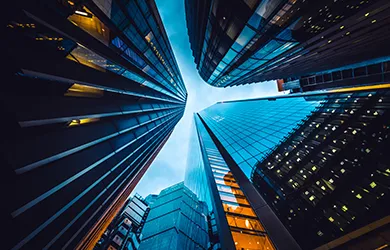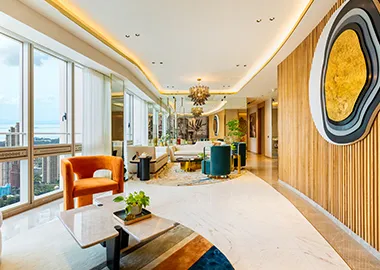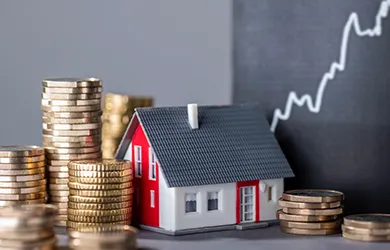Smart Workplaces Leads to a Happy and More Productive Employee.
By Lodha
May 31, 2019A closer look at the way offices were designed in the past highlights a glaring dissimilarity from those of today. Conference rooms that welcomed clients were replete with trendy designs that showcased the company's impressionable success. On the other hand, functional spaces where employees performed their daily duties were put on the backburner.
Recent studies have underlined this design imbalance as the major factor that contributes to the decreasing graph of productivity and increasing graph of health issues, as well as non-performance.
This major pain point has come to find its resolution in the smart workspaces of today. Office designs have begun to incorporate technology, sustainability and natural elements in their design. Thus, ensuring that employee wellbeing and performance remains optimal throughout the day. Such futuristic offices aid in the achievement of professional targets, while allowing employees to enjoy the process.
Walking down the productive lane
Research shows that the primary goal of an employee should be to tackle everyday tasks while moving around their space, as opposed to being stuck to their upholstered seats. Taking note of this, office designs have begun to incorporate retractable desks, carpeted areas with artificial grass and work station sensors. These are installed with the objective to make employees walk more, use their workstation effectively, collaborate efficiently, feel refreshed and ultimately develop a phenomenal work ethic.
Unearthing possibilities with data
The world is rapidly driven by data that is mined through personal experiences of individuals. A smart workspace design is no exception to this phenomenon and has begun to benefit by leveraging employee generated data. Sensors placed around the workspace help managers understand and analyse productivity in relation to work desk placements, lighting preferences, privacy requirements, stress-free zones, need for natural surroundings and so on. Once analysed, this data bridges the gap between what employees want and how they perform.
Decoding Biophilia
Biophilia is the scientific term that refers to the innate desire of every individual to stay connected with nature. Workspace design that is characterised with high-tech adjustable glass windows, inclusion of ferns and desktop succulents, excellent ventilation and the colour 'green', sets a great momentum for productivity. Dr. Chris Knight, who is a staunch advocate of upgrading 'lean' work environments found an improvement in mental capacities of employees who had plants in their periphery vision as opposed to those who didn't.
Increasing the happiness quotient
Happier employees are more productive. It is a universally accepted fact that employees perform better when they see working as not a chore, but as an activity. Workspaces that allow employees to express themselves and find solace while tackling deadlines can retain them better. Designs that encourage timely breaks to pursue passions and destress, have become quite popular among millennial employees. Dedicated gaming zones, retreat spaces and better designed break areas are the initial steps to achieve a better outlook in employees. More space for personalisation in addition to conducting mass surveys and feedback exercises with employees enable them to work and play better.
As work begins to revolve around the worker and not just tasks, offices combine smart designs with advanced technologies. With such an evolving backdrop, organisations poise themselves to promote happiness, inspiration and ultimately productivity in their employees. Designs, thus, begin to be evaluated and positioned intelligently to help employees become more efficiency-oriented and make workplace well-being a possibility.
To know about commercial projects from Lodha, click here
You may also like



 Enquire
Enquire
 Call
Call
 chat
chat
 Search
Search





